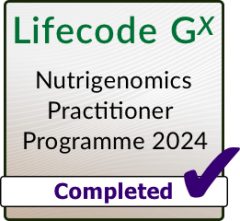Reference Number: 43
Year: 2017
Link: Link to original paper
Health: Diabetes
Summary
Summary
The purpose of the present study is to compare the effects of four different breads (one commercial par-baked wheat bread, three sourdough breads prepared with commercial wheat flour, organic wheat flour, organic einkorn flour) in 16 healthy subjects. The primary outcome of this randomized cross-over trial was evaluating intra-individual changes in glycemic areas-under-the-curve (AUCs) after 50 g carbohydrate portions of each bread; secondary outcomes were changes in insulin, fatty free acids (FFA), triglyceride, acylated ghrelin and satiety. Blood samples and satiety ratings were collected every 30 minutes for 2 hours after the consumption of each bread. The einkorn flour showed the lowest amylase activity, the commercial flour the highest; commercial bread had the highest carbohydrate content and the lowest dietary fiber content.
Glucose AUCs were significantly lower after the consumption of sourdough breads made with organic and einkorn flour, with respect to the commercial bread. Insulin AUCs decreased after the consumption of all sourdough breads when compared to commercial bread. FFA and triglyceride AUCs did not differ by kind of breads. Median ghrelin AUC was significantly lower and satiety higher after the einkorn bread than after commercial bread consumption , but not with other sourdough breads.
In conclusion, the use of sourdough may improve the nutritional features of breads; einkorn bread induced the least disturbance in carbohydrate homeostasis and the greater satiety. If confirmed by further research, these results might have implications in the approach towards chronic dysmetabolic diseases.
SIGNIFICANCE OF THIS STUDY
The current study shows that postprandial glycemic and insulin responses, satiety and the release of hormones regulating appetite and food intake seem regulated by the types of wheat and flour employed and the processing and preparation of bread. In terms of type of flour, the consumption of einkorn bread was associated with the more favorable metabolic responses and greater satiety with respect to refined wheat breads. In terms of processing, the consumption of sourdough breads resulted in lower glycemic and insulinemic responses than commercial bread at equal content of total carbohydrates. Although the study had a relatively small sample size, it had an adequate statistical power to detect meaningful differences.

